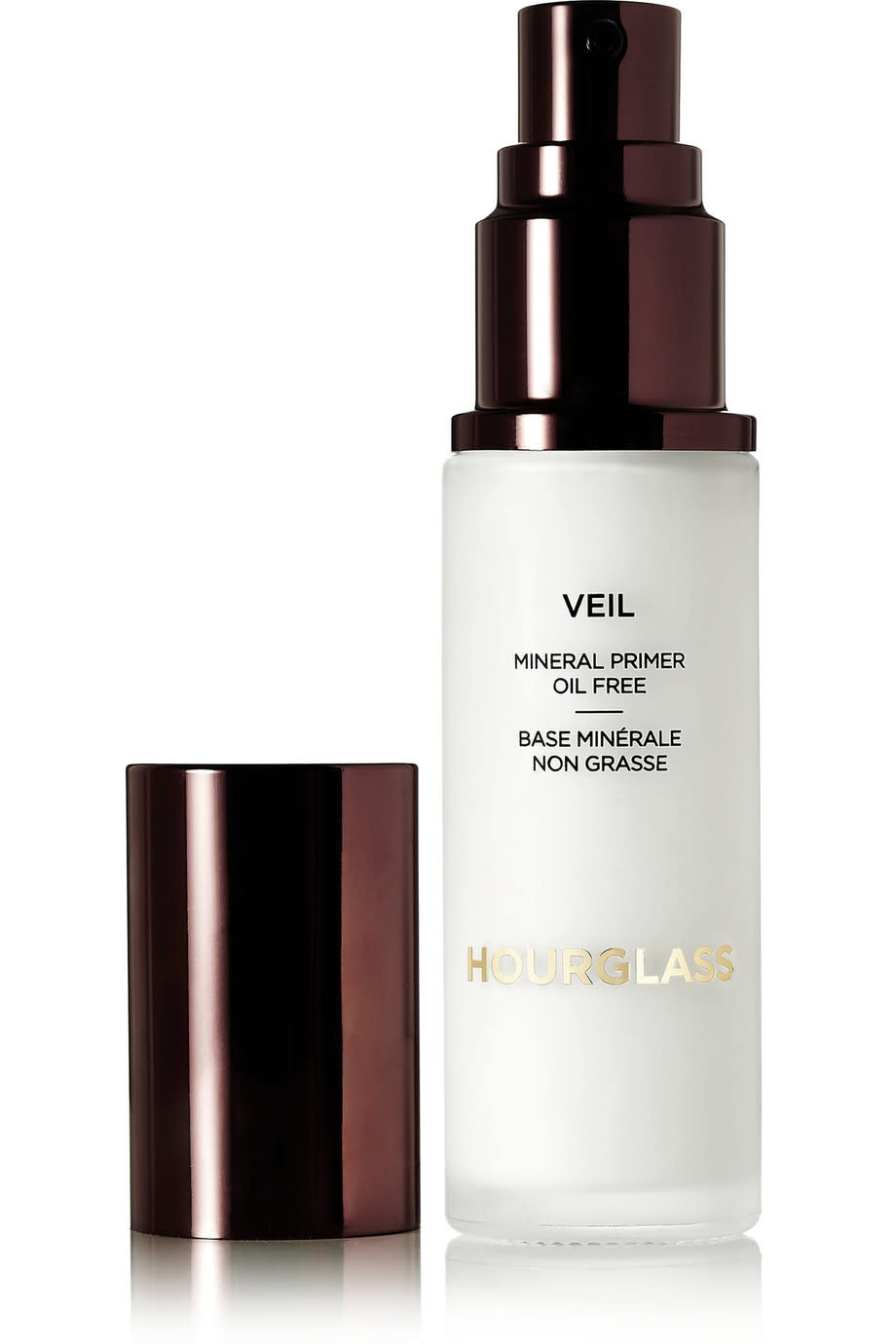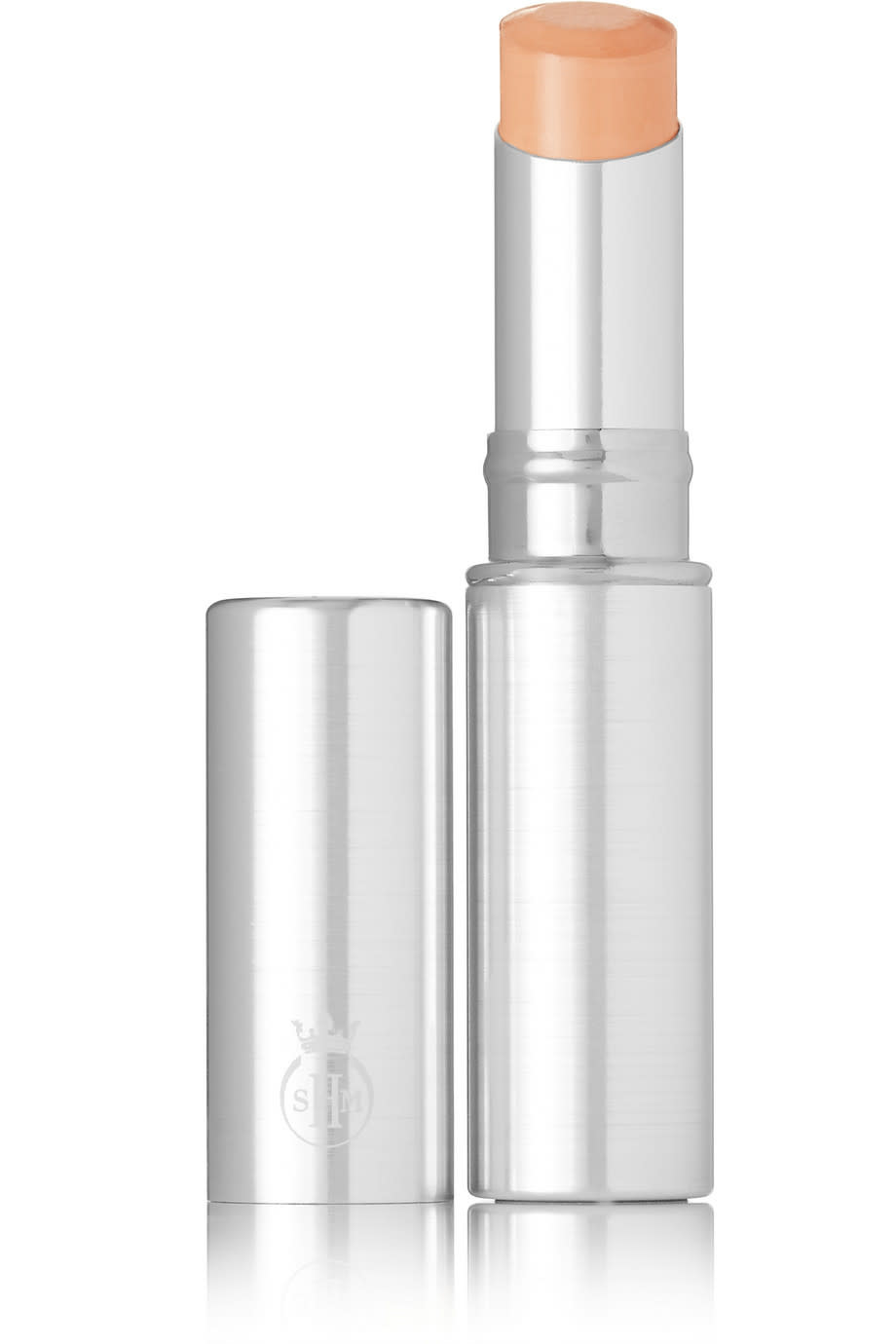The Truth About Mineral Makeup

Hourglass Viel Mineral Primer; NET-A-PORTER
By Danielle Fox for The EDIT
From Cleopatra using red ochre pigments on her lips to Aboriginal tribes painting their faces for ceremonies, minerals – naturally occurring solids such as gold, iron oxide, kaolin, mica, silica and zinc oxidem – have long been used cosmetically. However, it wasn’t until the early ’70s that mineral makeup was endorsed by dermatologists, who hailed the raw materials as wonder ingredients for sensitive skin. A cosmetics revolution was born and today minerals are widely used in makeup, said to offer soothing properties and a wide variety of natural pigments.
But as more brands add this marketing buzzword to their labels, confusion abounds: since 100 percent pure minerals only come in powder form, non-mineral ingredients have to be employed to transform these powders into lipsticks, blushes and foundations. But some argue that this negates the purity that made minerals so appealing in the first place. As British dermatologist Dr Sam Bunting explains, “‘Mineral’ is a broad label, so it’s important to probe.” Here, The EDIT helps makes sense of the world of mineral makeup.
ARE MINERALS NATURAL?
“Ironically, not all mineral-derived makeup uses natural minerals,” reveals US cosmetic chemist Randy Schueller, co-founder of The Beauty Brains website (thebeautybrains.com). “Check any ingredient list and you’ll find key minerals such as calcium carbonate, iron oxides, mica and titanium dioxide, but most of these are actually created in labs.” Naturally sourced minerals may also be treated in laboratories. Though this may sound misleading, your skin will benefit. “Pure, 100 percent natural minerals can be contaminated with mercury and lead, so these may also go through a laboratory process of extraction and purification,” says cosmetic scientist Perry Romanowski. “Undergoing the process in a lab ensures that the minerals are pure enough to be used in makeup.”
What to do: For face and eyes, look for 100 percent mineral powders, while for lipsticks and foundations, look for minerals combined with other organic ingredients to reap the rewards of a natural product.
WHAT ARE THE BENEFITS?
Simply put, mineral-derived makeup is less likely to aggravate your skin. “Bacteria doesn’t grow well in the alkaline environment found in pure minerals, so there are naturally fewer irritants to exacerbate sensitive skin,” says New York-based dermatologist and Assistant Clinical Professor of Dermatology at Mount Sinai Medical Center, Dr Jeannette Graf. She uses mineral makeup herself and recommends it to her patients suffering from rosacea, eczema and sensitive skin. “Pure, 100 percent mineral makeup formulas should also contain fewer ingredients that can cause breakouts or allergic reactions,” agrees Schueller.
What to do: Look for product labels with the shortest ingredients list – the longer the list, the more likely your skin will react to something. Avoid synthetic extras such as preservatives, parabens and fragrance. “Those with highly sensitive skin should keep an eye out for one of the main manufactured minerals, bismuth oxychloride,” advises Bunting. “For the vast majority of women it’s perfectly safe, but for some it can lead to irritations and breakouts. A by-product of lead and copper metal mixed with chloride and water, it is used in cosmetics for its distinct pearlescent finish.”
DO MINERALS OFFER SUN PROTECTION?
Found in many mineral face powders and foundations, titanium dioxide and zinc oxide are both FDA-approved physical sun blocks as they effectively bounce UV rays away from the skin, which is why they’re also used in SPF creams. But while an even application of mineral makeup will provide some sun protection, it is no match for using a proper sunscreen, mineral or otherwise. “Mineral makeup is only sufficient [as a sunscreen] for those days when you’re running a few errands outside,” explains Dr Sam Bunting.
What to do: “If you are going to be spending hours outdoors on a sunny day, skip makeup and use a tinted mineral sunscreen in a cream format with an SPF of 30 or above,” continues Bunting. “Make sure you apply it generously as most people chronically under-apply sunscreen – the average person uses as little as a quarter of the recommended amount – and reapply every two hours.”
CAN MINERALS HELP WITH PROBLEM SKIN?
Zinc oxide has long been lauded by dermatologists for its anti-inflammatory properties, and is seen in products from diaper-rash ointment to face powders. “Since most mineral face powders contain a higher percentage of zinc oxide than traditional counterparts, it can be useful in calming irritated and sensitive skin,’’ says Graf. “However, for patients who suffer from severe adult acne, I advise avoiding any powder formulations – mineral or not – as the granular composition can be an irritant.”
One of the most commonly used oils in liquid foundations is mineral oil, a byproduct of petroleum that is hailed for its emollient properties. The mineral oil used in cosmetics is completely safe, soothing, and healthy for skin. Though its oily texture doesn’t make it a typically favorite ingredient for anyone with shiny or breakout-prone skin, a recent study published in the Journal of Cosmetic Dermatology found cosmetic-grade mineral oil to be non-comedogenic, so it won’t clog your pores.
What to do: Mineral face powders are a great option for more sensitive skin types. Stick to 100 percent pure powder formulations as they will contain higher levels of zinc oxide. For further information on mineral makeup, visit safecosmetics.org.
THE MINERAL CHECKLIST
Talc: A completely natural mineral, talc powder has been maligned in the past as harmful and carcinogenic but there is no research to prove this.
Bismuth oxychloride: Manufactured in the laboratory, this powder has a natural metallic shine, known as synthetic pearl, which can sometimes lead to irritation in hypersensitive skin.
Mica: A natural mineral silicate with a crystalline shine. It is used as a pigment in most mineral powders and creams to add luminescent highlights.
Mineral oil: A derivative of petroleum. After it has been purified into cosmetic-grade mineral oil, it is considered the safest moisturizing ingredient in the cosmetic industry.
Titanium dioxide: Serves as sunscreen in mineral makeup as well as SPF creams, providing coverage and a matte finish.
Zinc oxide: Studies have shown that zinc oxides can facilitate healing for burns and scars, and can also be used in sun protection.

Omorovicza Mineral Touch Concealer; NET-A-PORTER
